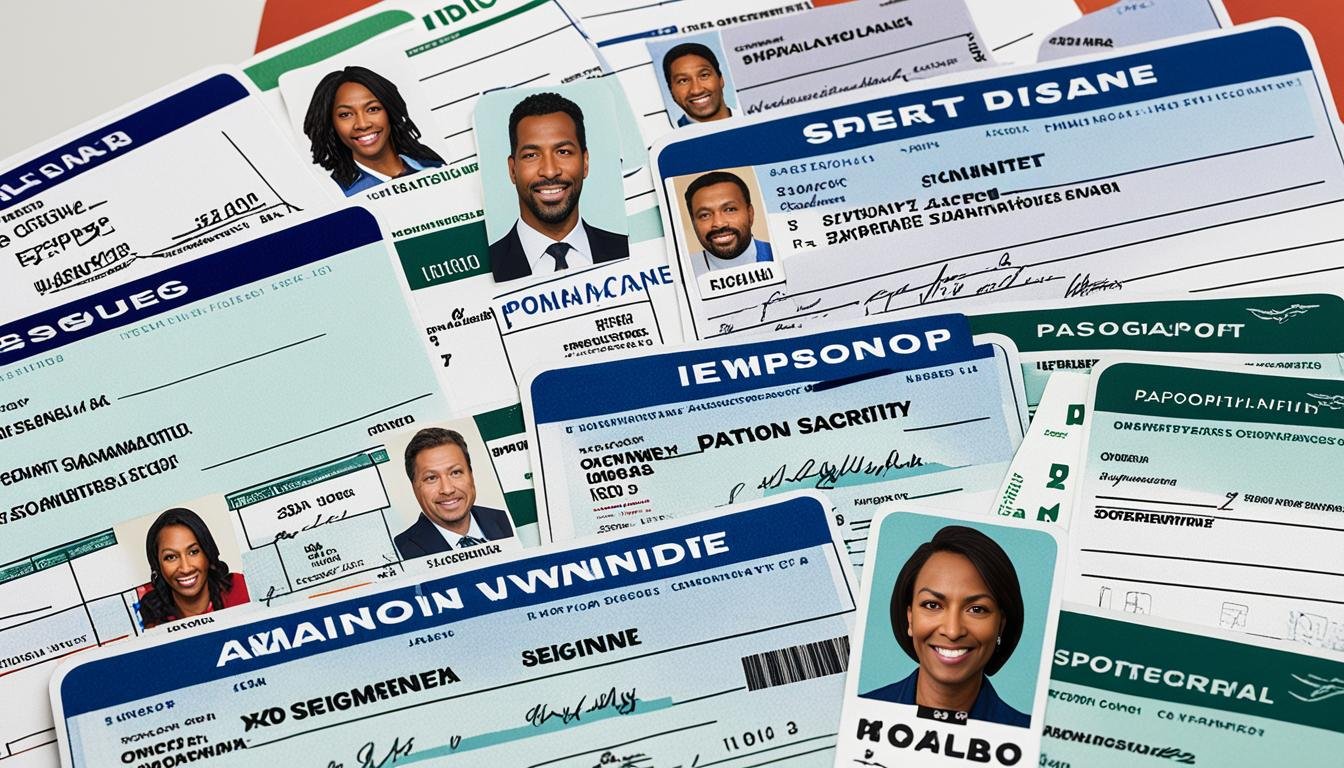When applying for a job, you may be asked to provide forms of identification to prove your identity and eligibility to work. But what exactly counts as a valid form of ID for employment? Understanding the acceptable forms of ID is crucial for a smooth hiring process.
Employers require documentation from employees to verify their identity and authorization to work. Acceptable forms of ID fall under three categories: List A, List B, and List C. Each list consists of specific documents that fulfill the required criteria.
List A documents are considered the most comprehensive and include documents that establish both identity and employment authorization. Examples of List A documents are a U.S. Passport, Permanent Resident Card (Green Card), Employment Authorization Document, and a foreign passport with an endorsement to work.
List B documents establish identity, while List C documents establish employment authorization. Employees can choose to present a List B document in conjunction with a List C document for verification.
It’s important to note that certain forms of ID, such as student ID cards or gun permits, are not accepted by employers as valid identification for job applications. Additionally, some ID documents may have expiration dates, requiring employers to reverify an employee’s authorization to work.
Key Takeaways:
- Valid forms of ID for a job include List A, List B, and List C documents.
- List A documents establish both identity and employment authorization.
- List B documents establish identity, while List C documents establish employment authorization.
- Certain forms of ID, such as student ID cards and gun permits, are not accepted by employers.
- Expiration dates on ID documents may require reverification of employment authorization by employers.
List A Documents
List A documents are the types of identification accepted by employers for job verification. These documents establish both identity and employment authorization, so employees presenting an acceptable List A document should not be asked to provide any additional forms of ID. Here are some valid forms of identification for job verification:
1. U.S. Passport or U.S. Passport Card
2. Permanent Resident Card or Alien Registration Receipt Card
3. Employment Authorization Document Card
These documents are widely recognized and accepted by employers as valid forms of identification for job verification purposes.
Note: This image is for illustrative purposes only and does not represent an actual List A document.
List A Documents Table
| Document | Description |
|---|---|
| U.S. Passport or U.S. Passport Card | Official identification issued by the U.S. government for international travel. |
| Permanent Resident Card or Alien Registration Receipt Card | Proof of lawful permanent resident status in the United States. |
| Employment Authorization Document Card | Indicates authorization to work legally in the United States. |
These are just a few examples of List A documents that employers accept for job verification. It is important to remember that employers may have specific requirements or preferences regarding acceptable forms of ID, so it is always best to consult with your employer or human resources department to ensure you have the appropriate documents for employment verification.
List B Documents
When it comes to establishing identity for job requirements, List B documents are essential. If you choose to present a List B document, you must also provide a document from List C as mentioned in Section 2. Acceptable List B documents include:
- Driver’s License
- ID card issued by government agencies
- School ID card with a photograph
- U.S. military card or draft record
These forms of identification are considered proper and valid for job requirements, ensuring that both your identity and eligibility to work are established.
| List B Documents | Description |
|---|---|
| Driver’s License | An official identification card issued by the state’s Department of Motor Vehicles (DMV), which indicates authorization to drive. |
| ID card issued by government agencies | An identification card issued by a government agency, such as a state ID card or a federal agency ID card. |
| School ID card with a photograph | A student identification card issued by a recognized educational institution, which includes a photograph of the student. |
| U.S. military card or draft record | A military identification card issued to active-duty, reserve, or retired members of the United States Armed Forces or a draft record indicating military service registration. |
Remember, proper identification is crucial for job requirements. By presenting a List B document along with a List C document, you can ensure a smooth and compliant employment verification process.

List C Documents
List C documents play a crucial role in establishing an individual’s employment authorization when applying for a job. In addition to presenting a document from List B for Section 2, employees who choose to provide a List C document demonstrate their eligibility to work in the United States. Some examples of List C documents include:
- Social Security account number card: This card verifies an individual’s Social Security number, which is often required for employment purposes.
- Consular Report of Birth Abroad: This document is issued by the U.S. Department of State and certifies that an individual was born abroad to U.S. citizen parents.
- U.S. Social Security account number card: This card carries the individual’s Social Security number and is a widely accepted form of identification in many job applications.
- Employment authorization document issued by the Department of Homeland Security: This document is obtained by individuals who have been granted authorization to work in the United States for a specified period of time.
These List C documents are considered valid identification documents for job applications, allowing employers to verify an individual’s employment authorization status. By presenting these documents, candidates demonstrate their eligibility to work in the United States, providing employers with the necessary information to make informed hiring decisions.
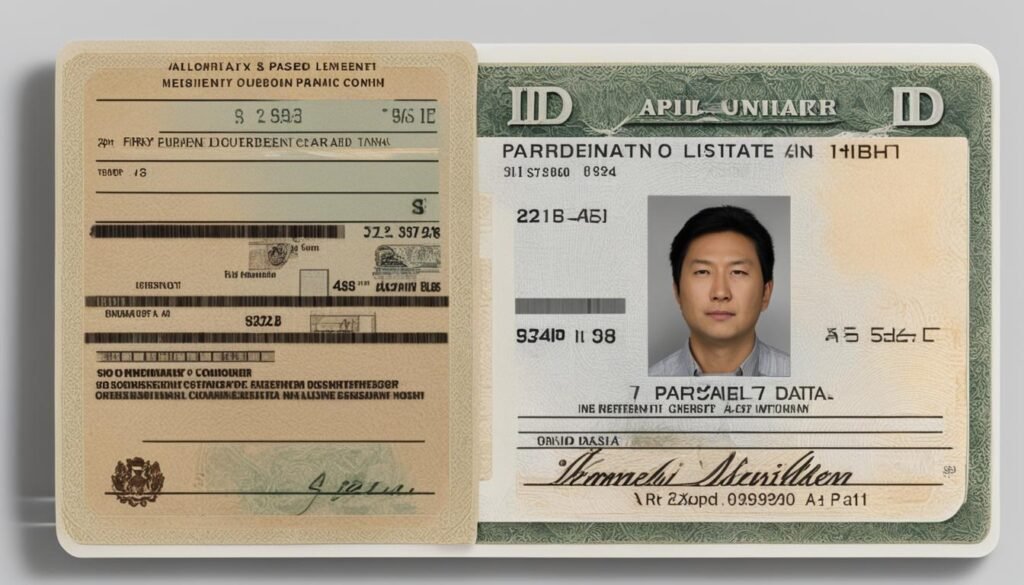
But what if you don’t have one of these documents?
If you don’t have a List C document, don’t worry. There are alternative options that may still allow you to establish your employment authorization. Some employers may accept acceptable receipts, which can be used temporarily in place of specific documents. These receipts are typically issued when an individual has lost, had stolen, or damaged their original documents from List A or List B.
“Acceptable receipts can be used in lieu of certain documents for a temporary period.”
However, it’s important to note that acceptable receipts should only be used as a temporary solution. It is advisable to obtain the necessary identification documents as soon as possible to ensure a smooth hiring process and satisfy the employer’s requirements.
| List C Documents | Examples |
|---|---|
| Social Security account number card | |
| Consular Report of Birth Abroad | 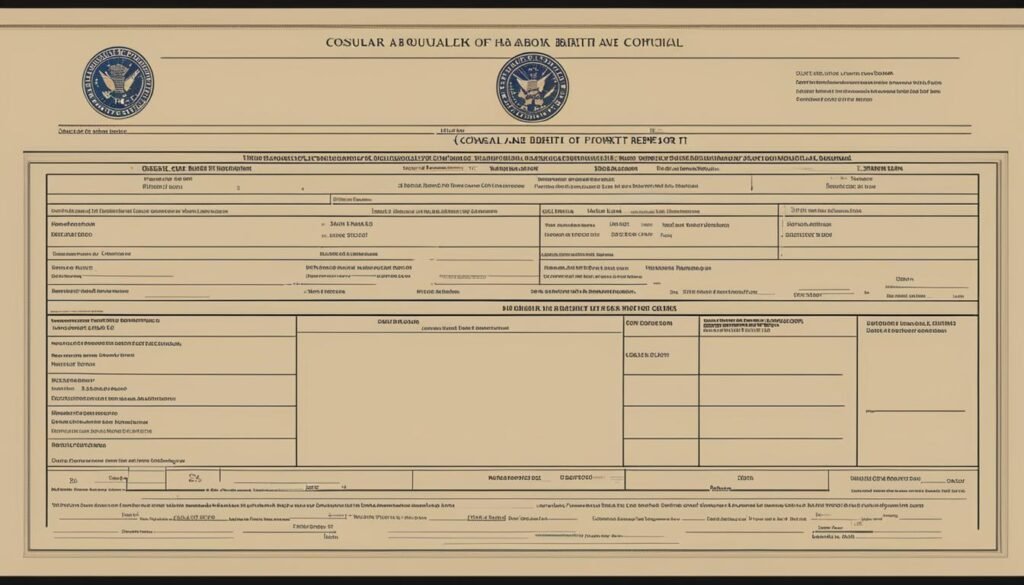 |
| U.S. Social Security account number card | 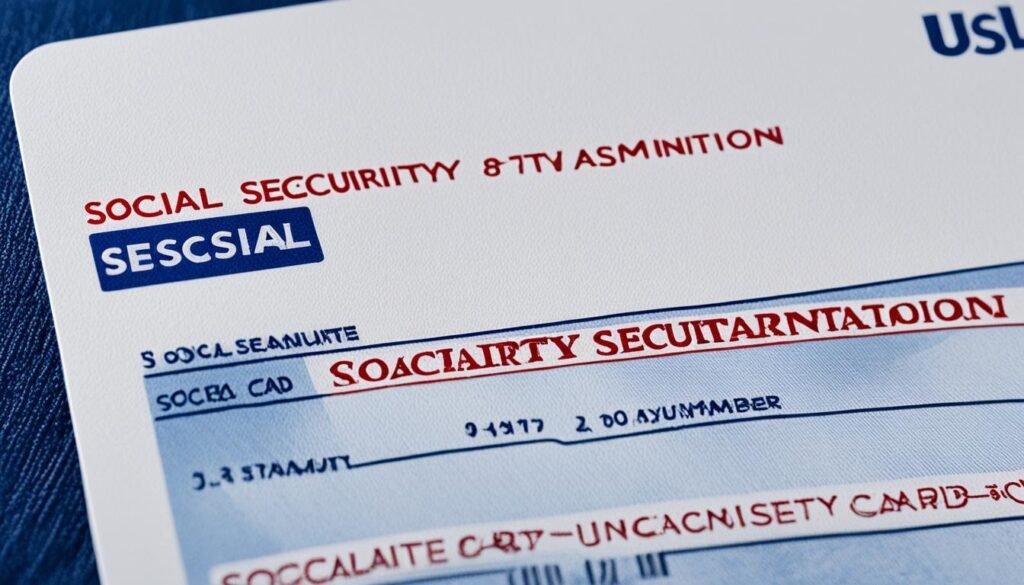 |
| Employment authorization document issued by the Department of Homeland Security | 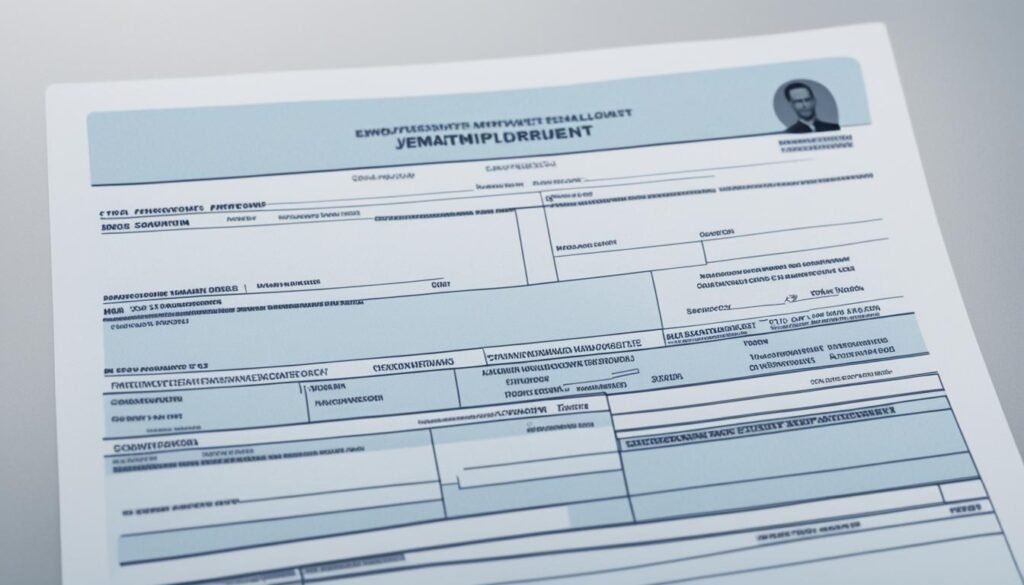 |
Acceptable Receipts
When it comes to providing identification for the hiring process, acceptable forms of ID are crucial. However, there may be situations where employees have lost or damaged their ID documents. In such cases, acceptable receipts can be used as temporary substitutes. For job documentation purposes, receipts for replacement of lost, stolen, or damaged List A or List B documents are considered valid forms of ID.
“Acceptable receipts provide a solution for employees who need to replace their identification documents. This allows them to continue their employment while waiting for the new documents to be issued.”
Below is an example of the types of acceptable receipts:
| Acceptable Receipts |
|---|
| Receipt for a replacement of a lost, stolen, or damaged List A document |
| Receipt for a replacement of a lost, stolen, or damaged List B document |
These receipts serve as valid forms of ID for job documentation purposes. They provide temporary proof of identity and can be utilized until the replacement documents are obtained.
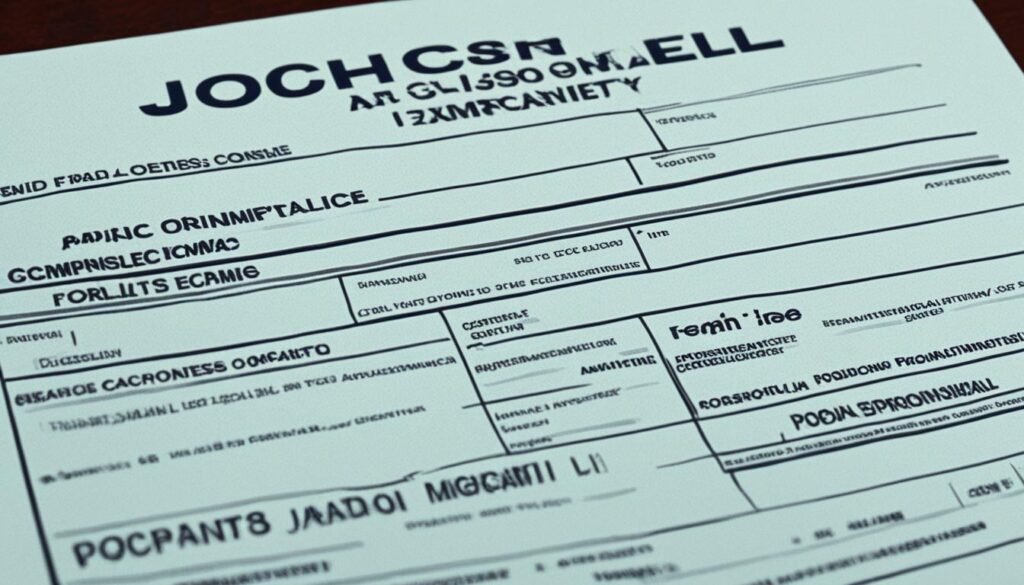
Linking Documents
Linking documents play a crucial role when the names on an individual’s identification (ID) documents do not match. In such cases, these documents are required to establish employment authorization and serve as valid forms of identification for job verification.
Examples of linking documents include:
- A marriage license with both names on it
- A court record linking the two names
These linking documents demonstrate the change in names and provide employers with the necessary evidence to verify an individual’s identity and employment authorization status. By accepting these documents, employers ensure compliance with job requirements and maintain the integrity of the hiring process.
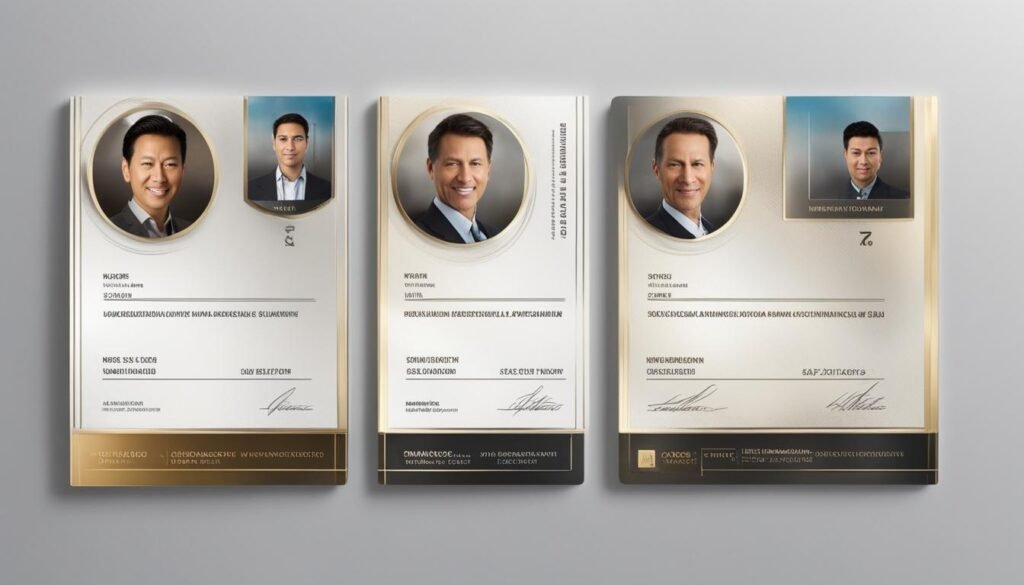
| Linking Documents | Accepted |
|---|---|
| Marriage license with both names on it | ✅ |
| Court record linking the two names | ✅ |
Unacceptable Forms of ID
When applying for a job, it is important to present valid forms of identification that employers will accept. However, there are certain forms of ID that employers do not consider acceptable for job applications. It is crucial to be aware of these invalid identification documents to avoid any delays or complications in the hiring process.
Forms of ID not accepted by employers include:
- Student ID cards
- Company ID cards
- Gun or firearms permits
- Licenses to carry
- Medical marijuana cards
- Hunting or fishing permits
- Facility badges
These forms of ID are not considered valid proof of identification for job applications. Therefore, it is essential to avoid presenting them to employers when verifying your identity and eligibility to work.
Employers require reliable forms of identification that establish both your identity and employment authorization. By presenting acceptable forms of ID, you can ensure a smooth and efficient hiring process.
Expiration Dates and Reverification
Some ID documents may have expiration dates, and employers may need to reverify an employee’s authorization to work when certain List A or List C documents expire. However, it is important to note that the expiration date does not preclude continuous employment authorization, and employers should not consider the expiration date when determining an individual’s qualifications for a job. Reverification may be required in certain circumstances, and employers should refer to the appropriate guidelines for the process.
Employers must stay vigilant about the expiration of identification documents to maintain compliance with employment authorization regulations. When certain List A or List C documents expire, reverification is necessary to ensure continued employment eligibility.
However, it’s crucial for employers to remember that the expiration date itself does not negate an individual’s authorization to work. The expiration date serves as a validation for the document’s currency and should not be used as a sole determinant of an individual’s qualifications for employment.
Reverification of employment authorization may be required in specific situations, such as when an employee’s work permit expires or when there are changes in immigration status. Employers should consult the appropriate guidelines provided by the U.S. Citizenship and Immigration Services (USCIS) to determine the process and timelines for reverification.
Best Practices for Expiration Dates and Reverification
When managing expiration dates and reverification, employers should follow these best practices:
- Implement a reliable system to track document expiration dates and send reminders to employees in advance.
- Develop clear policies and procedures for reverification, ensuring consistency and compliance across the organization.
- Train HR personnel and hiring managers on the reverification process to avoid unnecessary delays or errors.
- Stay updated on changes to employment authorization regulations and requirements to ensure compliance.
By proactively managing expiration dates and reverification, employers can maintain a compliant workforce while respecting employees’ rights and ensuring a smooth hiring and employment process.
| Expiring Identification Documents | Reverification Process |
|---|---|
| List A Document (e.g., Employment Authorization Document) | Verify the employee’s employment authorization by completing Section 3 of Form I-9. |
| List C Document (e.g., Social Security card) | Request an updated document from the employee to establish continuing employment authorization. |
It is crucial for employers to understand the importance of expiration dates and reverification to maintain a legally compliant workforce. By staying proactive and following the necessary steps, employers can ensure that the employment authorization of their employees remains valid and up to date.
Required ID for Enrollment and Activation Appointments
When it comes to enrollment and activation appointments, certain forms of identification are required to ensure a smooth process. These identification documents help establish your identity and eligibility for various programs and services. Here are the primary and secondary forms of ID that you may need to provide:
Primary Forms of ID:
- A U.S. passport or passport card
- A Permanent Resident Card (Green Card)
- A foreign passport with a temporary I-551 stamp
- A state-issued driver’s license or ID
Secondary Forms of ID:
- A Social Security card
- A birth certificate
Please note that expired forms of ID are not acceptable for enrollment and activation appointments. The identification documents you provide should be current and valid. Additionally, if there are name discrepancies between your identification documents, you may need to provide linking documents such as a marriage license or court order.
Ensuring you have the required forms of ID will help expedite your enrollment and activation appointments, allowing you to access the services you need efficiently. Remember to double-check the specific requirements for your appointment to ensure a smooth and hassle-free experience.
| Primary Forms of ID | Secondary Forms of ID |
|---|---|
| U.S. passport or passport card | Social Security card |
| Permanent Resident Card (Green Card) | Birth certificate |
| Foreign passport with a temporary I-551 stamp | |
| State-issued driver’s license or ID |
Conclusion
In conclusion, it is crucial for employees to provide valid forms of ID to their employers in order to establish their identity and employment authorization. Employers should familiarize themselves with the acceptable forms of ID, which include various documents from List A, List B, and List C. By ensuring that employees provide the necessary documentation, employers can meet the requirements for employment verification and maintain a smooth hiring process.
By understanding what counts as a form of ID for a job, employers can ensure compliance with job requirements and create a secure work environment. Valid job ID forms, such as a U.S. Passport, Permanent Resident Card, or Employment Authorization Document, are essential for verifying the identity and work eligibility of employees. Employers should communicate clearly to employees about the acceptable forms of ID and the importance of providing valid documentation.
Employment verification is an essential part of the hiring process, ensuring that employers hire authorized individuals who can legally work in the United States. By adhering to the guidelines for acceptable identification for employment, employers can protect their business and maintain legal compliance. Providing valid forms of ID establishes a foundation of trust and guarantees that the workforce is qualified and eligible for employment.
In summary, employers must prioritize the collection of valid job ID forms to establish the identity and employment authorization of their employees. With a comprehensive understanding of the acceptable forms of ID, employers can navigate the hiring process smoothly and ensure that all employees are legally eligible to work. By prioritizing compliance and proper identification, employers can build a strong and trustworthy workforce.
FAQ
What forms of identification are considered valid for job applications?
Acceptable forms of identification for job applications include List A documents, which establish both identity and employment authorization.
What are some examples of List A documents?
Examples of List A documents include a U.S. Passport, Permanent Resident Card (Green Card), Employment Authorization Document, and foreign passport with an endorsement to work.
What is the purpose of List B documents?
List B documents establish identity and must be accompanied by a document from List C for Section 2 of the employment verification process.
Can you give me some examples of List B documents?
Examples of List B documents include a Driver’s License, ID card issued by government agencies, School ID card with a photograph, and U.S. military card or draft record.
What role do List C documents play in the employment verification process?
List C documents establish employment authorization and must be presented with a document from List B for Section 2.
What are some examples of List C documents?
Examples of List C documents include a Social Security account number card, Consular Report of Birth Abroad, U.S. Social Security account number card, and Employment authorization document issued by the Department of Homeland Security.
Can you use receipts as valid forms of identification for job documentation?
Yes, acceptable receipts can be used in lieu of certain documents for a temporary period, such as a receipt for a replacement of a lost, stolen, or damaged List A or List B document.
Are there any linking documents required for employment verification?
Yes, in cases where the names on the ID documents do not match, linking documents such as a marriage license or court order may be required to show the change in names.
What forms of identification are not accepted by employers?
Forms of ID that are not accepted include student ID cards, company ID cards, gun or firearms permits, licenses to carry, medical marijuana cards, hunting or fishing permits, and facility badges.
Why do some identification documents have expiration dates?
Some identification documents, such as List A and List C documents, may have expiration dates. Employers may need to reverify an employee’s authorization to work when certain documents expire.
What forms of ID are required for enrollment and activation appointments?
Primary forms of ID, such as a U.S. passport or passport card, Permanent Resident Card (Green Card), foreign passport with a temporary I-551 stamp, and state-issued driver’s license or ID, are required for enrollment and activation appointments.
Source Links
- https://www.uscis.gov/i-9-central/form-i-9-acceptable-documents
- https://www.uscis.gov/i-9-central/form-i-9-resources/handbook-for-employers-m-274/130-acceptable-documents-for-verifying-employment-authorization-and-identity
- https://www.gsa.gov/technology/it-contract-vehicles-and-purchasing-programs/federal-credentialing-services/get-appointment-help/bring-required-documents
